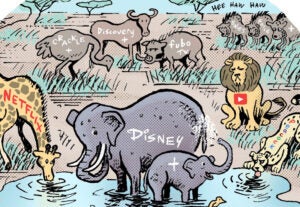 “Data Driven Thinking” is written by members of the media community and containing fresh ideas on the digital revolution in media.
“Data Driven Thinking” is written by members of the media community and containing fresh ideas on the digital revolution in media.
Today’s column is written by Zach Coelius, CEO of Triggit, an online advertising technology company.
For anyone who has been watching the data space over the last year and a half, the explosion of options for advertisers is a little daunting. There are now so many data companies, with so many segments, that the average media buyer is completely overwhelmed. So the question is, ‘Where should an advertiser get started to understand this new world of audience data and segmenting?’
Thankfully the answer is easy. Start with your data. It is not only the most important data for you as an advertiser because of its tremendous latent equity value, but it will also reveal the path to understanding the kaleidoscope of third party data that is out there.
Your data is what we call in the industry first-party data. First-party data is data collected by you, the advertiser, about your customers. This can be accumulated as a result of users visiting a site, a database of email addresses, lists for offline marketing, data from a CRM system, offline transaction history, and any other data about customers. This data provides a view into current customers and prospects. By starting with this data you can leverage all the hard work you have already done and begin with what you know is working.
The first step in using this first party data in the online display world is to work with a good demand side platform (DSP) that has the technical capabilities and offline data partners to enable you to anonymously map your users into their platform. Once your users are mapped into a DSP, you will have the ability to target display campaigns to them anywhere they go across the web. You can now slice and dice your regular customers into segments and market to them in very different ways depending on their value or preferences. For instance, if you run a travel site, you may want to separately identify your users who are regular travelers or those who stay in luxury hotels. For the regular travelers, you might choose to show a display ad featuring the weekly special to their regular destinations, or you might cross-sell other offerings in those cities. For your luxury hotel buyers you may decide to show them occasional brand advertisements to keep your travel site top of mind since they are such high margin customers. Once you have mapped your users into a DSP, the ways that you can communicate with them are virtually limitless.
In many ways first-party data and a DSP allow advertisers to communicate with their users across the web just as they would using email or offline direct marketing. Moreover, because display is such a good brand-building channel, you can blend your direct efforts with awareness campaigns and work towards other more long term KPIs.
The second opportunity for using your first-party data is to determine the overlap between your users and third party data segments. Once your users are mapped into a DSP, you should be able to generate all sorts of interesting methods for finding new customers by using the DSP’s ability to show you all the overlapping third party data segments on your existing customers. This could be as simple as discovering that your customers fit a very specific demographic and geographic profile and then targeting other users who fit that profile. Or you may see that there is a high correlation between customers who converted having been previously identified as intenders though a third party data provider. You could then test that data as a means to reach new customers while they are in-market. Alternatively you may find that your users congregate on certain types of sites that you hadn’t already identified, enabling you to buy display impressions on those sites to target similar people. In short, once you have identified the characteristics of your customers, the options for branching out and growing your audience becomes much more apparent. In a lot of ways building, testing and rebuilding audience segments resembles search marketing in the iterative process of testing keywords.
In the end, first-party data, your data, provides a road map for sifting through the universe of audience targeting options and enables the smart advertiser to leverage the value of all the data they accumulate though their other marketing efforts. As the demand side keeps building better tools, developing more powerful platforms, getting access to more inventory, and incorporating more data into our systems, the innovate marketers who get in front of this trend and learn to use their audience data will reap the rewards.
Follow Zach Coelius (@zcoelius), Triggit (@triggit) and AdExchanger.com (@adexchanger) on Twitter.











